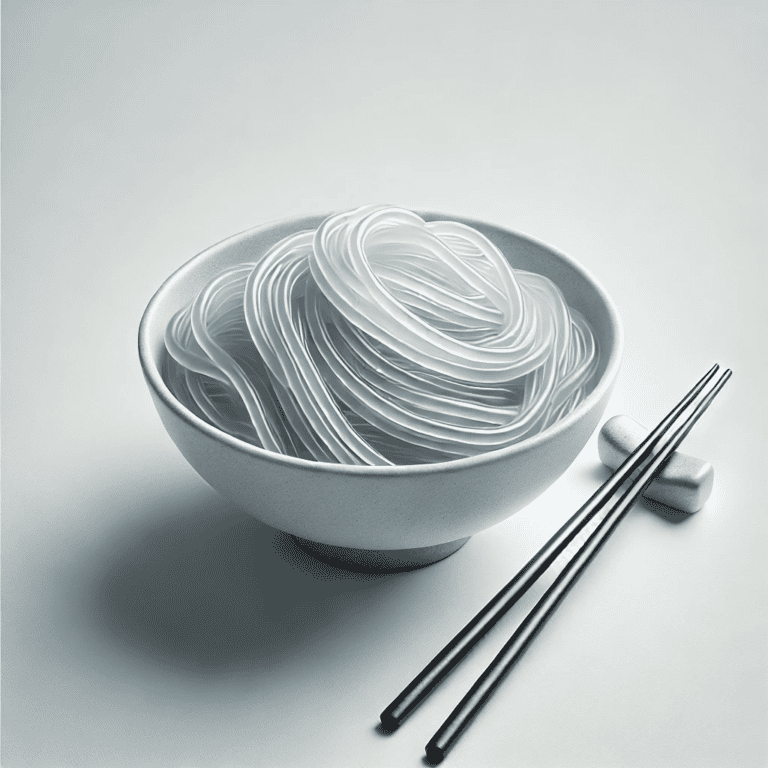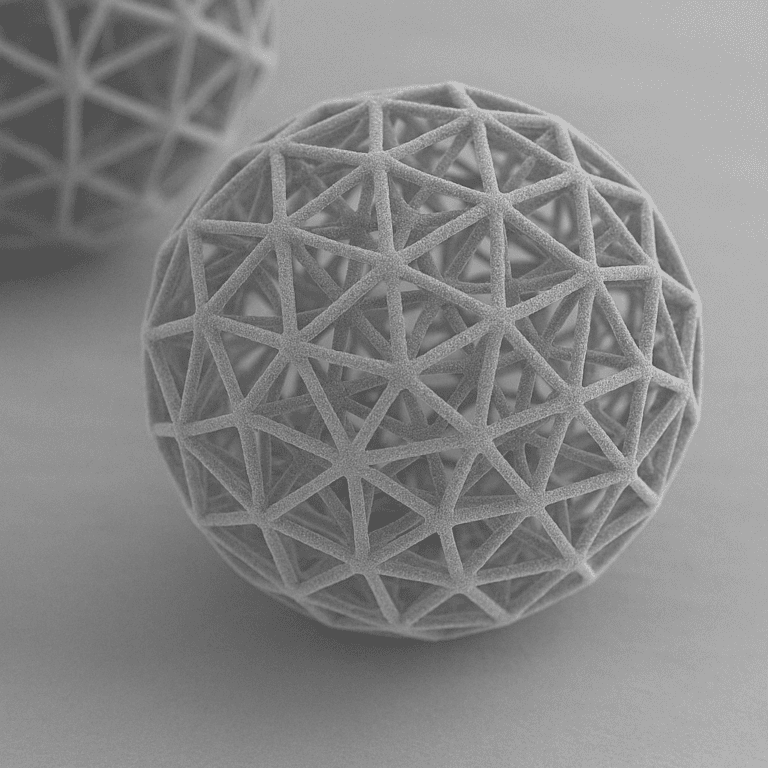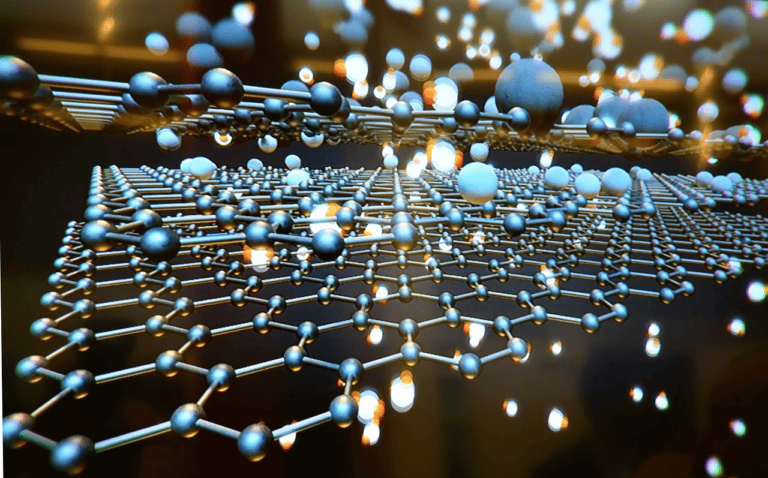Recent Advances in Hydrogels and Their Applications
This review delves into the most recent advances in hydrogel technology, with an emphasis on creative preparation methods, novel property characterizations, and a wide range of applications in biomedicine, agriculture, and smart material design.

Introduction to Hydrogels
Hydrogels are three-dimensional networks of hydrophilic polymer chains that exist in a watery environment (Zhang & Khademhosseini, 2017). These materials have a high water content and flexibility, similar to genuine biological tissues, making them ideal for use in tissue engineering and regenerative medicine (Hu, 2024). However, one typical disadvantage of hydrogels is their lack of mechanical strength, which can be problematic for several applications, notably in the biomedical field (Phan et al., 2021).
Hydrogel preparation and characterization procedures are critical for customizing their characteristics to specific applications. For example, designing hydrogel adhesion at soft and moist interfaces is critical for biomedical applications (Bovone et al., 2021). Furthermore, graphene inclusion into hydrogels has been studied to increase mechanical properties, opening up new avenues for use in photothermal biomedicine (Phan et al., 2021). Conductive hydrogels have also evolved as a novel material with potential uses in tissue and chemical engineering (Liu et al., 2020).
Hydrogels have uses in a variety of sectors, including healthcare, agriculture, and smart materials. In biomedicine, hydrogels with distinct physical properties have been produced for purposes such as medication delivery and tissue engineering. Furthermore, the development of smart and stimuli-responsive hydrogels has made them more useful in sophisticated systems for biomedical applications (El-Husseiny et al., 2022). In agriculture, hydrogels have been investigated for the development of floating microdevices with excellent mobility and self-assembling capabilities on water surfaces (Oliveira et al., 2016). The adaptability of hydrogels has also been used to create smart materials for flexible electronics and bionics (Jiao et al., 2020).
Hydrogels are flexible materials with several applications due to their unique features. Engineering advances have resulted in the production of hydrogels with increased mechanical strength, conductivity, and response to stimuli, broadening their potential uses in a variety of disciplines. Hydrogel preparation methods, characterisation techniques, and new designs continue to drive research toward generating tailored hydrogels for specific applications, establishing their importance in biomedicine, agriculture, and smart material development.
Preparation and Characterization of Hydrogels
Hydrogels can be created by a variety of processes, including natural, synthetic, and hybrid approaches. Among these technologies, photocrosslinking techniques using visible or ultraviolet light have gained popularity due to their ease and versatility, particularly for in situ preparation. Conductive hydrogels, which mix conductive polymers with hydrogels, are often created utilizing processes such as in situ polymerization, which provides benefits such as high conductivity and environmental resilience. Furthermore, the production of hydrogels from natural polysaccharides such as dextran and synthetic materials has been extensively studied, demonstrating the versatility of hydrogel creation.
Characterization approaches are critical for understanding hydrogel characteristics and tailoring them to specific applications. Porosity, swelling behavior, and mechanical strength are important features that are frequently measured to improve hydrogel performance. For example, the manufacture of hydrogels with controllable morphology using a three-phase system has been demonstrated to be viable, allowing for the production of hydrogels with desired features. Furthermore, techniques such as 3D printing have permitted the creation of hydrogels with directed microstructures, which improves their usefulness for a variety of applications.
To summarize, hydrogels are prepared using a variety of processes, ranging from natural to synthetic, with each giving distinct advantages for certain uses. Characterization techniques are critical for analyzing features like as porosity, swelling behavior, and mechanical strength, allowing hydrogels to be tailored to specific applications such as drug delivery, tissue engineering, and sensor technologies.
Applications of Hydrogels
Hydrogels have been widely used in a variety of industries due to their versatility and responsiveness to changing needs. Hydrogels have showed potential as wound dressings, tissue adhesives, and drug delivery systems. Studies have underlined the importance of features like self-healing capacities, tissue adhesiveness, and biocompatibility in hydrogels for effective wound care. Chen et al. (2018); Gavel et al. (2020); Divyashri et al. (2022). Hydrogels are particularly designed to keep wounds moist, speed up the healing process, and provide antibacterial qualities to prevent infections (Ma et al., 2022; Wang, 2024; Suneetha et al., 2022).
Hydrogels play an important role in tissue engineering by providing scaffolding for cell growth and regeneration. These hydrogels are intended to replicate the extracellular matrix by increasing cell adhesion, proliferation, and differentiation (Wang et al., 2020; Ying et al., 2021; Shen et al., 2023). Hydrogels have been designed to improve wound healing by accelerating tissue regeneration and offering antibacterial effects by including stimuli-responsive features such as multistimuli responsiveness (Bi, 2023; Mushtaq, 2023; Wang, 2023).
Furthermore, hydrogels have shown tremendous promise in agricultural applications, particularly in soil moisture management and water retention. Agricultural techniques that use hydrogels with high water absorption capacity can benefit from improved soil water retention, resulting in increased plant growth and sustainability. The capacity of hydrogels to adapt to external stimuli has enabled novel solutions in smart materials and biosensors. These hydrogels can detect and react to changes in their surroundings, making them useful for a variety of sensing applications (Li et al., 2020; Wang et al., 2021; Basu et al., 2018).
In conclusion, hydrogels’ uses in drug delivery systems, wound healing, tissue engineering, agricultural water retention, smart materials, and biosensors demonstrate their broad utility and potential effect in a variety of sectors. Hydrogels’ unique features, including as self-healing, biocompatibility, and reactivity to environmental stimuli, continue to drive innovation and breakthroughs in a wide range of applications, paving the way for fresh solutions in healthcare, agriculture, and material science.
References:
Basu, A., Celma, G., Strømme, M., & Ferraz, N. (2018). In vitro and in vivo evaluation of the wound healing properties of nanofibrillated cellulose hydrogels. Acs Applied Bio Materials, 1(6), 1853-1863. https://doi.org/10.1021/acsabm.8b00370
Bi, Y. (2023). Seconds timescale synthesis of highly stretchable antibacterial hydrogel for skin wound closure and epidermal strain sensor. Advanced Healthcare Materials, 13(7). https://doi.org/10.1002/adhm.202302810
Bovone, G., Dudaryeva, O., Marco‐Dufort, B., & Tibbitt, M. (2021). Engineering hydrogel adhesion for biomedical applications via chemical design of the junction. Acs Biomaterials Science & Engineering, 7(9), 4048-4076. https://doi.org/10.1021/acsbiomaterials.0c01677
Chen, T., Chen, Y., Rehman, H., Chen, Z., Yang, Z., Wang, M., … & Liu, H. (2018). Ultratough, self-healing, and tissue-adhesive hydrogel for wound dressing. Acs Applied Materials & Interfaces, 10(39), 33523-33531. https://doi.org/10.1021/acsami.8b10064
Ding, X., Yu, Y., Yang, C., Wu, D., & Zhao, Y. (2022). Multifunctional go hybrid hydrogel scaffolds for wound healing. Research, 2022. https://doi.org/10.34133/2022/9850743
Divyashri, G., Badhe, R., Sadanandan, B., Vijayalakshmi, V., Kumari, M., Ashrit, P., … & Raghu, A. (2022). Applications of hydrogel‐based delivery systems in wound care and treatment: an up‐to‐date review. Polymers for Advanced Technologies, 33(7), 2025-2043. https://doi.org/10.1002/pat.5661
El-Husseiny, H., Mady, E., Hamabe, L., Abugomaa, A., Shimada, K., Yoshida, T., … & Tanaka, R. (2022). Smart/stimuli-responsive hydrogels: cutting-edge platforms for tissue engineering and other biomedical applications. Materials Today Bio, 13, 100186. https://doi.org/10.1016/j.mtbio.2021.100186
Gavel, P., Kumar, N., Parmar, H., & Das, A. (2020). Evaluation of a peptide-based coassembled nanofibrous and thixotropic hydrogel for dermal wound healing. Acs Applied Bio Materials, 3(5), 3326-3336. https://doi.org/10.1021/acsabm.0c00252
Gong, C., Tang, W., Wang, X., Zhao, X., Chen, C., & Zhu, Z. (2019). Applications of hydrogels with special physical properties in biomedicine. Polymers, 11(9), 1420. https://doi.org/10.3390/polym11091420
Hu, S. (2024). Macrostructure and microenvironment biomimetic hydrogel: design, properties, and tissue engineering application. Chemistry of Materials, 36(3), 1054-1087. https://doi.org/10.1021/acs.chemmater.3c02098
Jiao, C., Gao, L., Zhang, H., Yu, B., Cong, H., & Shen, Y. (2020). Dynamic covalent c═c bond, cross-linked, injectable, and self-healable hydrogels via knoevenagel condensation. Biomacromolecules, 21(3), 1234-1242. https://doi.org/10.1021/acs.biomac.9b01689
Li, J., Fan, Y., Chen, G., Jia, L., Li, X., Cheng, B., … & Pan, J. (2020). Moist-retaining, self-recoverable, bioadhesive, and transparent in situ forming hydrogels to accelerate wound healing. Acs Applied Materials & Interfaces, 12(2), 2023-2038. https://doi.org/10.1021/acsami.9b17180
Liu, K., Wei, S., Song, L., Liu, H., & Wang, T. (2020). Conductive hydrogels—a novel material: recent advances and future perspectives. Journal of Agricultural and Food Chemistry, 68(28), 7269-7280. https://doi.org/10.1021/acs.jafc.0c00642
Ma, H., Peng, Y., Zhang, S., Zhang, Y., & Min, P. (2022). Effects and progress of photo-crosslinking hydrogels in wound healing improvement. Gels, 8(10), 609. https://doi.org/10.3390/gels8100609
Mushtaq, F. (2023). Injectable chitosan–methoxy polyethylene glycol hybrid hydrogel untangling the wound healing behavior: in vitro and in vivo evaluation. Acs Omega, 9(2), 2145-2160. https://doi.org/10.1021/acsomega.3c04346
Oliveira, N., Zhang, Y., Ju, J., Chen, A., Chen, Y., Sonkusale, S., … & Khademhosseini, A. (2016). Hydrophobic hydrogels: toward construction of floating (bio)microdevices. Chemistry of Materials, 28(11), 3641-3648. https://doi.org/10.1021/acs.chemmater.5b04445
Patil, T., Patel, D., Dutta, S., Ganguly, K., Randhawa, A., & Lim, K. (2021). Carbon nanotubes-based hydrogels for bacterial eradiation and wound-healing applications. Applied Sciences, 11(20), 9550. https://doi.org/10.3390/app11209550
Phan, L., Vo, T., Hoang, T., & Cho, S. (2021). Graphene integrated hydrogels based biomaterials in photothermal biomedicine. Nanomaterials, 11(4), 906. https://doi.org/10.3390/nano11040906
Shen, J., Li, L., Kang, X., Lin, D., Xiao, Y., Yang, L., … & Jiang, C. (2023). Multilayered upconversion nanocomposite-based photodynamic hydrogel dressings for wound sterilizing and healing. Acs Applied Nano Materials, 6(14), 12726-12735. https://doi.org/10.1021/acsanm.3c00947
Suneetha, M., Rao, K., & Han, S. (2022). Cell/tissue adhesive, self‐healable, biocompatible, hemostasis, and antibacterial hydrogel dressings for wound healing applications. Advanced Materials Interfaces, 9(13). https://doi.org/10.1002/admi.202102369
Wang, M. (2023). Engineering single-component antibacterial anti-inflammatory polyitaconate-based hydrogel for promoting methicillin-resistant staphylococcus aureus-infected wound healing and skin regeneration. Acs Nano, 18(1), 395-409. https://doi.org/10.1021/acsnano.3c07638
Wang, Y. (2024). Hemostatic tranexamic acid-induced fast gelation and mechanical reinforcement of polydimethylacrylamide/carboxymethyl chitosan hydrogel for hemostasis and wound healing. Biomacromolecules, 25(2), 819-828. https://doi.org/10.1021/acs.biomac.3c00999
Wang, Y., Garcia, C., Ding, Z., Gabrilska, R., Rumbaugh, K., Wu, J., … & Li, W. (2020). Adhesive, self-healing, and antibacterial chitosan hydrogels with tunable two-layer structures. Acs Sustainable Chemistry & Engineering, 8(49), 18006-18014. https://doi.org/10.1021/acssuschemeng.0c05730
Wang, Y., Liu, S., & Yu, W. (2021). Functionalized graphene oxide‐reinforced chitosan hydrogel as biomimetic dressing for wound healing. Macromolecular Bioscience, 21(4). https://doi.org/10.1002/mabi.202000432
Ying, R., Huang, W., & Mao, X. (2021). Synthesis of agarose-based multistimuli-responsive hydrogel dressing for accelerated wound healing. Acs Biomaterials Science & Engineering, 8(1), 293-302. https://doi.org/10.1021/acsbiomaterials.1c01215
Zhang, Y. and Khademhosseini, A. (2017). Advances in engineering hydrogels. Science, 356(6337). https://doi.org/10.1126/science.aaf3627



